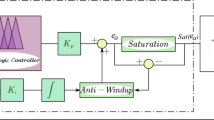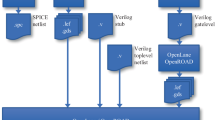Abstract
Floating-point addition is the most frequently used arithmetic operation in almost all general-purpose processors. This paper presents a dual-mode architecture for fused floating-point three-term adder. The traditional architecture for fused floating-point three-term adder is single-mode design where the addition of three operands takes place in a single unit. The existing improved architecture is also a single-mode design that incorporates few optimizations compared to the traditional fused floating-point three-term adder that would reduce area as well as delay. The proposed dual-mode architecture performs either a double-precision addition or two parallel single-precision additions in a single architecture based on the mode selection. The proposed architecture supports both normal and subnormal operations and also exceptional case handling like infinity, NaN and zero cases. The proposed architecture is implemented using both FPGA and ASIC, thus leading to efficient resource sharing, and the area gets reduced compared to two single-precision and a double-precision traditional and improved floating-point adder architectures.








Similar content being viewed by others
References
A. Akkas, Dual-mode floating-point adder architectures. J. Syst. Archit. 54(12), 1129–1142 (2008)
A. Akkas, Dual-mode quadruple precision floating-point adder, in Proceedings of the Euromicro Symposium Digital System (DSD’06) (2006), pp. 211–220
J.D. Bruguera, T. Lang, Floating-point fused multiply-add: reduced latency for floating-point addition, in 17th IEEE Symposium on Computer Arithmetic (2005), pp. 42–51
S. Galal, M. Horowitz, Energy-efficient floating-point unit design. IEEE Trans. Comput. 60(7), 913–922 (2011)
Y. Hida, X.S. Li, D.H. Bailey, Algorithms for quad-double precision floating point arithmetic, in Proceedings 15th IEEE Symposium on Computer Arithmetic. ARITH-15 (2001), pp. 155–162
IEEE Std 754-1985, IEEE Standard for Binary Floating-Point Arithmetic (IEEE, 1985)
IEEE standard 754-2008, IEEE Standard for Floating-Point Arithmetic. Technical Report (2008), pp. 1–70
M.K. Jaiswal, R.C.C. Cheung, M. Balakrishnan, Unified architecture for double/two-parallel single precision floating point adder. IEEE Trans. Circuits Syst. 61(7), 521–525 (2014)
T. Lang, J.D. Bruguera, Floating-point multiply-add-fused with reduced latency. IEEE Trans. Comput. 53(8), 988–1003 (2004)
G. Marcus, P. Hinojosa, A. Avila, J. Nolazco-FIores, A fully synthesizable single-precision, floating-point adder/substractor and multiplier in VHDL for general and educational use, in Proceedings of the Fifth IEEE International Caracas Conference on Devices, Circuits and Systems (2004), pp. 319–323
V.G. Oklobdzija, An algorithmic and novel design of a leading zero detector circuit: comparison with logic synthesis. IEEE Trans. Very Large Scale Integr. VLSI Syst. 2(1), 124–128 (1994)
H. Saleh, E.E. Swartzlander, A floating-point fused add-subtract unit, in 51st Midwest Symposium on Circuits and Systems (2008), pp. 519–522
H.H. Saleh, E.E. Swartzlander, A floating-point fused dot product unit, in Proceedings of the IEEE International Conference Computer Design (2008), pp. 427–431
E.M. Schwarz, M. Schmookler, S.D. Trong, Hardware implementations of denormalized numbers, in Proceedings of the 16th IEEE Symposium on Computer Arithmetic Metic (2003), pp. 70–78
P.M. Seidel, G. Even, Delay-optimized implementation of IEEE floating-point addition. IEEE Trans. Comput. 53(2), 97–113 (2004)
J. Sohn, E.E. Swartzlander, Improved architectures for a fused floating-point add-subtract unit. IEEE Trans. Circuits Syst. I Reg. Pap. 59(10), 2285–2291 (2012)
J. Sohn, E.E. Swartzlander, A fused floating-point three-term adder. IEEE Trans. Circuits Syst. I Regul. Pap. 61(10), 2842–2850 (2014)
E.E. Swartzlander, H.H. Saleh, Fused floating-point arithmetic for DSP, in Proceedings of the 42nd Asilomar Conference on Signals, Systems and Computers (2008), pp. 767–771
Y. Tao, G. Deyuan, F. Xiaoya, R. Xianglong, Three-operand floating-point adder, in IEEE 12th International Conference on Computer and Information Technology (2012), pp. 192–196
A.F. Tenca, Multi-operand floating-point addition, in Proceedings of the 19th IEEE Symposium on Computer Arithmetic (ARITH ‘09) (2009), pp. 161–168
Author information
Authors and Affiliations
Corresponding author
Rights and permissions
About this article
Cite this article
Thiruvenkadam, K., Ramesh, J. & Pillai, A.S. Area-Efficient Dual-Mode Fused Floating-Point Three-Term Adder. Circuits Syst Signal Process 38, 173–190 (2019). https://doi.org/10.1007/s00034-018-0848-y
Received:
Revised:
Accepted:
Published:
Issue Date:
DOI: https://doi.org/10.1007/s00034-018-0848-y




